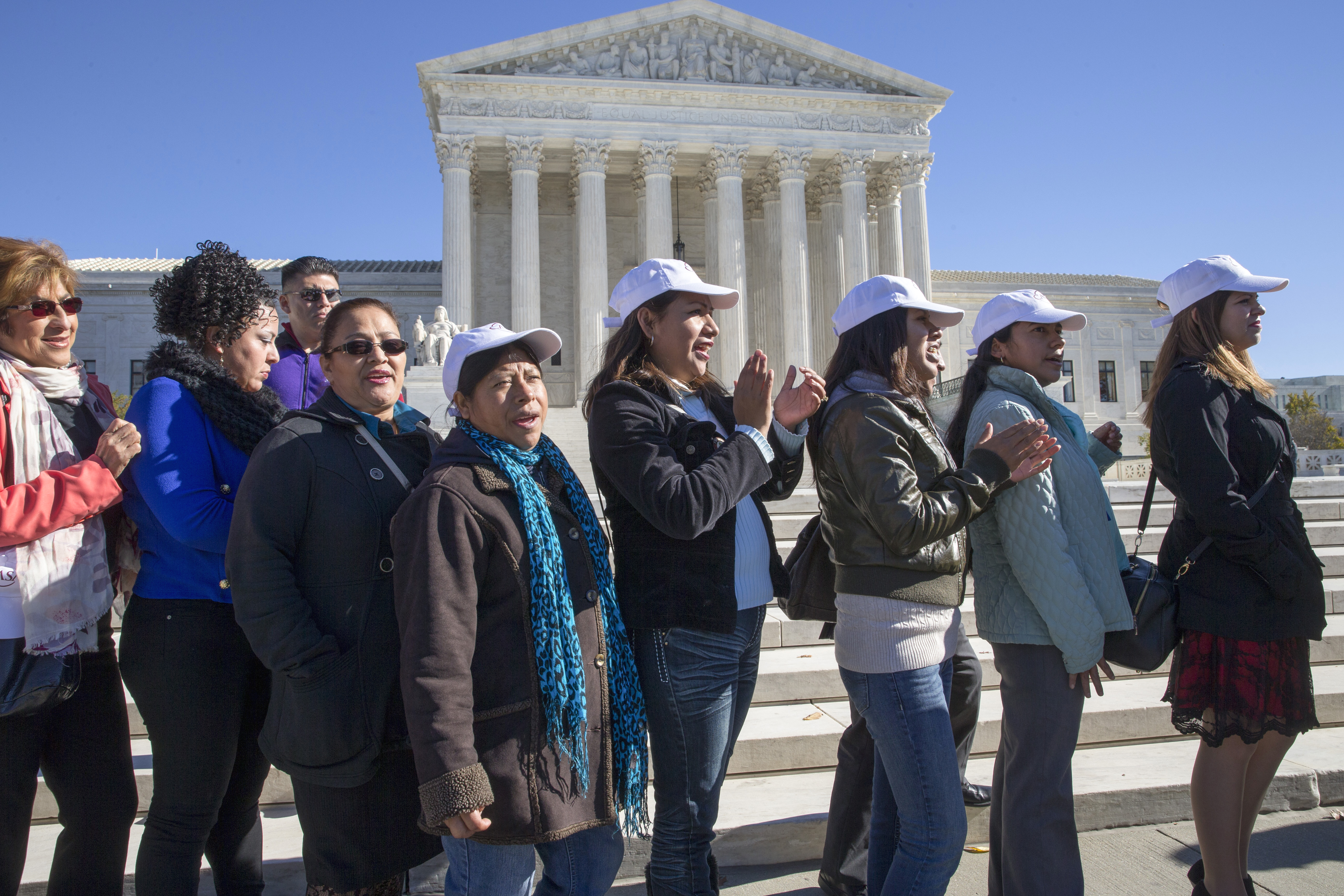From immigration to abortion to the power of unions, the Supreme Court is entering this election year with a full plate of politically charged cases.

by Sam Baker • NationalJournal
The Court hasn’t officially agreed to hear this one yet, but most experts think it will—and that a decision will come by the end of June. That’s certainly the Obama administration’s hope; winning at the Supreme Court is the only way Obama will be able to implement his Deferred Action for Parents of Americans and Lawful Permanent Residents program, or DAPA, which would allow some 4.3 million undocumented immigrants to remain in the country.
A ruling for the Obama administration would allow DAPA to take effect—and Democratic front-runner Hillary Clinton has said she would stretch the policy even further. A loss for the administration, on the other hand, would vindicate Republican criticisms that DAPA went too far, and would give a Republican president a way out of the program without rolling back any legal protections himself.
Abortion
Under Chief Justice John Roberts, the Supreme Court has largely stayed out of the abortion debate. But that will change in June, when the Court is expected to rule on the constitutionality of state laws that make it much harder for many women to receive an abortion. Specifically, the Court is considering a challenge to Texas laws that say abortion clinics must satisfy certain surgical standards and that providers must have admitting privileges at a nearby hospital.
All but 10 of the abortion clinics in Texas would likely be forced to close if the state’s restrictions are upheld—and Texas is not the only state to pass, or consider passing, similar restrictions. Abortion-rights advocates say a win for the state at the Supreme Court would have far-reaching consequences.
It could be one of the Court’s most significant abortion decisions since 1992, when it ruled that states can regulate the procedure but cannot put an “undue burden” on women’s access to it. The Court did not give many details about what would constitute an “undue burden,” and the question before it now is whether Texas’s restrictions have crossed that line.
Contraception
Obamacare’s contraception mandate is not a particularly critical part of the law’s central aims, but the policy already took on outsized political significance when it reached the high court in 2014. That influence could grow even bigger in 2016, with an abortion case also on the docket and the possibility of the first female president just around the corner.
The Court is hearing a challenge filed by religious-affiliated nonprofit groups. They’re not required to cover contraception in their employees’ health care plans; they can recuse themselves from that duty based on a religious objection, and the responsibility for managing birth-control coverage then shifts to their insurance companies. But the nonprofits object to initiating that process because it still requires them to perform an action that ends up with their employees receiving coverage for contraception.
Redistricting
One of the more complicated cases on the docket this term deals with state legislative redistricting—and what could be more political than the rules of the political process?
States are supposed to draw their legislative districts based on the principle of “one person, one vote.” For decades, they’ve interpreted that to mean that each district should contain roughly an equal number of people. But a handful of voters in Texas say districts should actually be drawn to equalize the number of eligible voters, rather than the total population.
A victory for those voters would lead to a massive upheaval in state redistricting—and would significantly benefit Republicans, who already have a strong advantage in state-level politics. The justices were deeply divided when they heard oral arguments in the case. Even if they don’t rule that states must redraw their districts around eligible voters, a ruling that says they can draw districts that way would also be a major change.
Also: Race, the death penalty, unions, and individuals vs. corporations
Behind the big-ticket cases that could end up in presidential-campaign ads, the Court’s load of semi-big cases is also especially political. Foremost among them is the latest challenge to affirmative action, which Roberts has worked hard to roll back. The Court has also heard oral arguments in a handful of cases on the death penalty, which the Court’s liberals have fought hard to restrict. While none of this term’s cases present a good vehicle for the Court to revisit the basic question of whether capital punishment is constitutional, they could place new limits on the practice, particularly as it’s applied to mentally ill defendants.
On Jan. 11, the Court will hear oral arguments in a case that could further limit the power of public-sector unions—including teachers’ unions, traditionally a powerful Democratic ally. A group of non-unionized public-school teachers is asking the Court to overturn an earlier ruling that said unions could collect dues from non-members, as long as that money wasn’t spent on political activity.
The Court has already ruled in one of four cases that pitted individual consumers against corporations, another running theme of the Roberts Court and of the current term. The justices said in December that a class-action lawsuit against DirecTV could not go forward and had to be settled through arbitration—a process that tends to favor corporations. Three other cases this term could significantly restrict class-action suits.